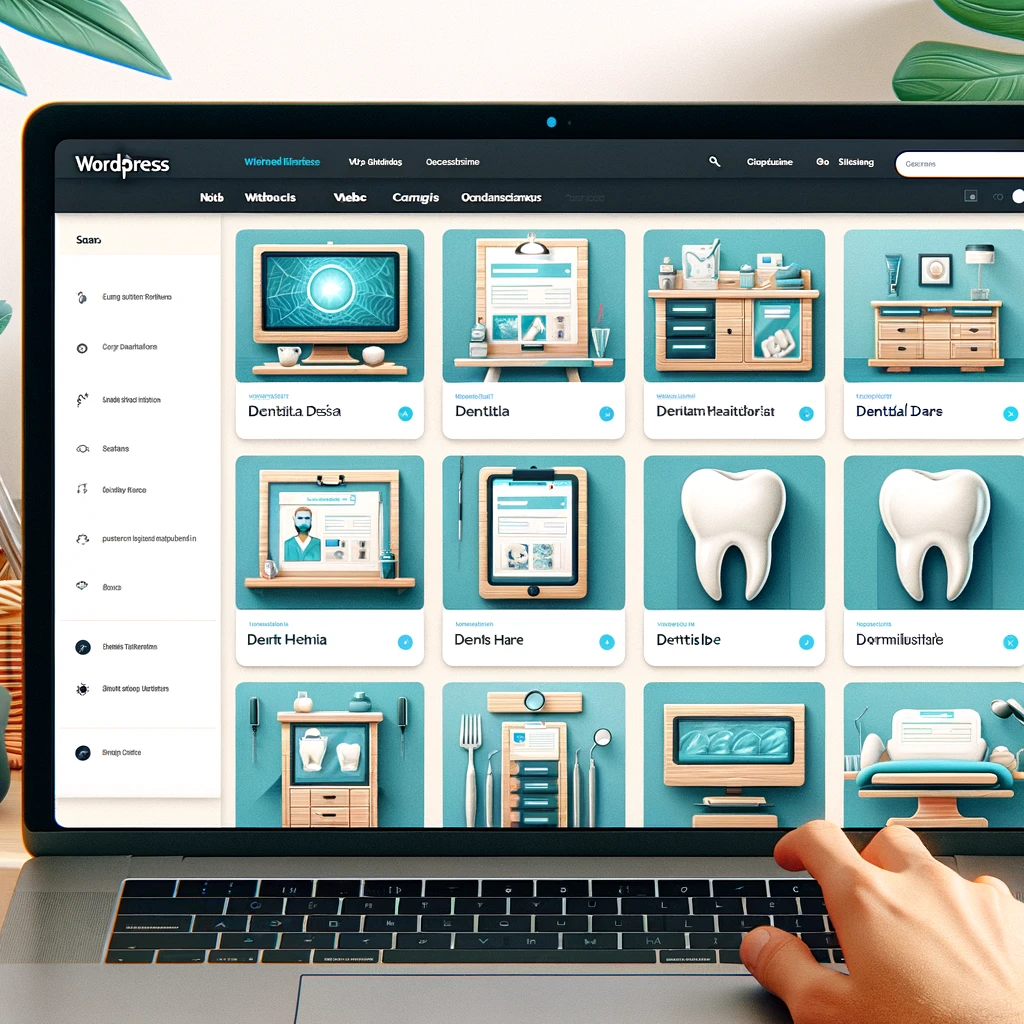Quick Summary
Welcome to our comprehensive guide on building a professional dental website. Here’s a snapshot of what we’ll cover:
Essential Website Features for Dental Practices: Discover the must-have elements that make your dental website functional and engaging, such as online scheduling and informative service pages.
Step-by-Step Guide to Building a Sitemap: Understand the importance of a well-structured sitemap in helping search engines effectively index your website, enhancing online visibility.
Importance of Mobile-Responsive Design: Learn why a mobile-friendly website is crucial for attracting and retaining patients in today’s digital era.
SEO Strategies Tailored for Dental Websites: Dive into specialized SEO tactics, including local keyword optimisation and content strategies, to boost your site’s search engine ranking.
Compliance with the Privacy Act 1988 and Data Security: Gain insights into the legal requirements for protecting patient information online, ensuring your website adheres to the highest standards of data security.
Each of these points plays a vital role in not just creating a dental website, but in ensuring it effectively meets the needs of your practice and your patients, driving growth and enhancing your digital presence.
Our 2024 Dental Website Build Guide
A dental website can help with many things, which include allowing patients to schedule appointments, send new patient forms, and educate readers about dental health. There are certain features you need to have to ensure your dental practice thrives in the online sphere, and if you’re new, you’ll want to continue reading this guide.
If you’re not sure where to start and you’re on a tight budget, you can try a DIY online website builder, which is low cost and easy to use. Since they’re template-based and act as a quick and cheap alternative, the end result might not look the best.
But would a carpenter let their customers build a chair for themselves? Would a dentist recommend their patients do their own dentistry? Definitely not. They can do whatever they can to keep their teeth clean, but the essential aspects of dental hygiene should be left in the hands of a professional. Likewise, when it comes to designing a good website, you’re better off in the hands of an expert.
If you do want to take up the task yourself, it’s advised to use WordPress to build your dentist’s website, as it’s by far the world’s most popular web design tool. More than a quarter of ALL websites are built using WordPress nowadays, so you’ll be in good company if you choose to do so too.

There are many reasons why you should go with WordPress, but here’s just a few:
- It’s a free tool, so there are no licensing costs.
- It’s comparatively easier to use and has a better learning curve.
- It performs great from an online marketing perspective
- You will always find skilled WordPress developers who will help you.
- There are loads of features for functionality.
- There are many high-quality dental practice WordPress themes/templates.
How to Structure a Dentist Website - Essential Features
Start by building a Sitemap
One important aspect of creating a dentist’s website is building a sitemap. This will be the blueprint of your website that will help search engines find, crawl and index your website’s content. A sitemap tells search engines which pages are most important and is in the form of an XML sitemap that links to different pages on your website.

Have a Homepage
Of course, the homepage is one of the most important pages on your dental website, as prospective patients will initially see this when they come across your website. It is crucial to make a good first impression, so try to showcase the best content and the important procedures on your homepage.
Make an About Page
This page will be an overview of the dental office, which includes some history and the services offered. You can have separate About pages where you dive in deeper about the company. Here’s an example:
- Meet the Dentist(s) – This page can display the dentists and any information regarding education, experience, and achievements.
- Our Staff – This page will simply introduce your staff to any prospective patients.
- Vision or Mission – This page will be for your vision or mission statement.
- Awards and Honors – You can make a separate page to show any awards, achievements, and honours that were won by your dental office.
- Press and Media – This page will be dedicated to publishing press and media mentions.
Create Pages for Each Treatment/Service
Although you know what services you provide, your prospective patients don’t. So, having a properly optimised page for every service you provide gives you an SEO advantage. Suppose someone searches for “root canal in Sydney, Australia,” your page has a higher chance of showing up in the search results. When people find you via search results, you’re more likely to get patients without having to spend on ads.
Add Location Pages for Multi-Location Practices
Just like having pages for every service you provide, you need to create pages for every location too.
For example, a dentist in Victoria might also have a location in Queensland. While the website might be optimised for Victoria, there should also be a page for Queensland. This boosts the chances of prospective patients in these cities to find them when they look for local dentists online.
Include Dentist Bios
Including bios for the dentists at your practise can go a long way if you want to establish trust and credibility before patients pick up the phone. When patients can see and know who will examine their teeth and treat them, they will feel at ease and trust you with something as important as their teeth.
Be sure to include education, years of experience, and any professional associations you belong to in your dentist bio. When your credentials are laid out, it will remove any hesitation patients might have.
Start a Blog
Adding a blog to your website is a great way to drive traffic and build credibility to your website, as you’ll be able to add relevant keywords and fresh content. Each new piece of content can be an opportunity to bring in more leads if you add a call-to-action button to your blog posts.
Online Scheduling
Both prospective and existing patients would like the convenience of booking appointments online. And nowadays, most people expect to be able to do that. Your website will work for you 24/7, so you should add an online scheduling feature that allows you to book appointments around the clock. Patients will appreciate the convenience, and the staff will have fewer phone calls.
Elements to Create a Memorable Dental Website Design

When you’re designing a unique dental website, there are some things you need to keep in mind:
Logo:
Your logo needs to be on every page of your website to establish consistency. It’s also a way to improve brand awareness.
Brand Messaging:
What would you like your patients to feel when they think of your practice? Family-friendly? Cheap? Quality? It’s important to come up with your brand messaging, so you don’t come across as wrong to your community.
Brand Colors:
This is the perfect time to use colour psychology, which is the study of hues as a way to determine human behaviour. For example, red tones lead to feelings of arousal, while blue tones are usually associated with feelings of relaxation.
Procedure Explanation Videos:
New patients who come to your website would like to know more about the treatment/procedure they need, so by putting up explanation videos, you’re not only comforting patients who might be anxious about their next procedure, but you’re also showing patients you have authority in this field.
Professional Photos:
This is always a great way to make your team feel more personal. You can have individual photos of each team member as well as team photos on your site. A common image that’s in most dentist clinics are Before and After procedure pictures, so be sure to include those as well.
Fundamental Factors Dentists Should Consider With Their Website
The Privacy Act 1988 is the Australian counterpart to HIPAA. Patient health data is one of the most sensitive types of personal information, so the Privacy Act was designed to provide further layers of protection to secure said data, among other materials. For example, any company is required to obtain the consent of the individual prior to collecting their health information. Additionally, each and every health service in Australia, regardless of size, is bound by the Privacy Act.
In other words, any information transmitted through your website needs to be encrypted and secure. A good way to do this is with an SSL certificate. It is highly recommended to get SSL certificates for a website, especially for healthcare providers like dentists. A security measure like an SSL certificate secures your patients and the practice itself. It would be horrible if a patient’s information was stolen due to security issues on your dental practice’s site.
Mobile-friendly
You need to make sure your site has a responsive design, which means your website will scale to look perfect and function well on any given device. Google understands that responsive websites give people searching from mobile devices a much better user experience.
The search engine giant uses mobile responsiveness as a ranking factor, so the bottom line is – a responsive website will give your visitors a superior user experience and help your dentist’s website rank higher on Google and other search engines.
Optimised to Convert Browsers Into Patients
You need to make some changes to your website to optimise it for conversions, and in this case, conversions are most likely in the form of website visitors who want to book an appointment. To do that, you need to add CTAs throughout your site.
What are the right CTAs for a dental website?
CTAs should ask your visitors to make a call or book an appointment from your dental website. It’s good to provide your phone number on each page of your dental website and ensure that it is clearly visible. If you want your visitors to make an appointment from your website, then add the relevant CTA buttons throughout the site. Additionally, you can keep your address in the footer section as well to make it easier for potential customers to walk in for a consultation.
Extended Footer
This small addition can make a massive difference in your social media following. By adding social media icons in the footer of your website, you make it much easier for patients to find and follow you on their chosen platform.
Social Media
Adding on from the previous point, it’s helpful if you connect with new patients and maintain relationships with existing ones by engaging them on social media. Whether it’s a picture or a blog post, it’s always a good idea to leverage social media platforms like Instagram or Facebook to expand your reach.
Make Sure Your Website Can Be Found
Another thing you should include is the different ways to make your website more visible. This can be done by making separate social media pages that are linked to your website. You definitely need a Google My Business listing as that is the first search result you will see when you search for any business. If someone is looking for your dental clinic, they will find all the relevant information about your company from your Google My Business listing. Additionally, you can also list your dental clinic in local directories to help improve search visibility.
SEO Tips Specific to Dental Websites
Optimising your dental website for search engines is crucial to increasing your online visibility and attracting more patients. Here are some tailored SEO strategies:
Keyword Research
- Focus on Local SEO Keywords: Patients often search for dental services in their local area. Target keywords like “dentist in [city name]” or “teeth whitening services [location].”
- Use Keyword Tools: Utilize tools like Google Keyword Planner or SEMrush to find relevant keywords with good search volume in your area.
- Understand User Intent: Align your keywords with what potential patients might search for. This could range from specific treatments to general dental queries.
Content Optimisation
- Keyword Placement: Include your primary keywords in titles, meta descriptions, and within the first 100 words of your page content.
- Quality Content: Write informative and engaging content that addresses common patient concerns and questions about dental procedures.
- Avoid Keyword Stuffing: Use keywords naturally rather than overloading your content, which can negatively impact your SEO.
Local SEO Tactics
- Google My Business: Claim and update your Google My Business listing. This is crucial for appearing in local search results and Google Maps.
- Encourage Reviews: Ask satisfied patients to leave reviews on your Google My Business profile. Positive reviews can significantly boost your local SEO.
- Include Local Keywords: Sprinkle local terms and landmarks into your website content to further optimise for local search.
Backlink Strategy
- Build Relationships for Backlinks: Connect with local businesses and dental associations for backlinks. This can increase your website’s authority and search ranking.
- List in Local Directories: Ensure your practice is listed in local business directories and dental directories with a link back to your website.
- Create Shareable Content: Publish content that is valuable enough for others to link to, such as original research, dental care tips, or infographics.
Monitoring SEO Performance
- Use Analytics Tools: Regularly check Google Analytics and Google Search Console to monitor your website’s traffic and search performance.
- Track Keyword Rankings: Keep an eye on how your chosen keywords are ranking in search results.
- Adapt Strategies Based on Data: Use the insights from these tools to refine your SEO tactics over time, focusing on what works best for your practice.
Regular Updates and Maintenance
To ensure your dental website remains effective, secure, and user-friendly, regular updates and maintenance are essential. Here’s a guide to what you should focus on:
Content Update Schedule
- Set a Regular Schedule: Plan to update website content regularly, such as bi-monthly or quarterly. This keeps information like service descriptions, staff bios, and blog posts current and relevant.
- Review and Refresh Content: Regularly assess and update content for accuracy, especially regarding dental procedures, staff changes, or practice policies.
- Stay Relevant: Keep up with dental industry trends and incorporate any new services or technology your practice adopts into your website content.
Technical Maintenance
- Update Your CMS and Plugins: Regularly update your content management system (like WordPress) and plugins. This not only improves functionality but also protects against security vulnerabilities.
- Perform Regular Backups: Ensure your website data is backed up frequently to prevent data loss in case of technical issues.
- Check Compatibility: After updates, verify that all elements of your website are still functioning correctly and are compatible with each other.
Website Performance Checks
- Conduct Performance Reviews: Use tools such as Google PageSpeed Insights to check your website’s loading speed and performance every month or quarter.
- Mobile Responsiveness: Ensure your website displays correctly and functions smoothly on various devices, especially smartphones and tablets.
- User Experience (UX) Audits: Regularly review your website’s navigation and overall user experience to ensure it’s intuitive and user-friendly.
Security Updates
- Regular Security Audits: Perform security checks to identify any vulnerabilities on your website.
- Update SSL Certificates: Ensure your SSL certificates are always up to date to maintain secure connections and protect patient data.
- Data Encryption: Regularly verify that all patient data transmitted through your website is encrypted and secure, adhering to privacy laws.
User Feedback Incorporation
- Gather Patient Feedback: Actively seek feedback from your patients about their experience using your website. This can be done through surveys, feedback forms, or direct communication.
- Implement Changes: Use the feedback to make necessary adjustments to your website, enhancing usability and patient satisfaction.
By adhering to these regular maintenance and update practices, your dental website will not only perform better but also offer a secure and user-friendly experience to your patients, thereby supporting the growth and reputation of your practice.
Conclusion

So there you have it, the ultimate guide to building your first dental website! To reiterate, you definitely need a website for your dental practice as it can help spread awareness of your brand and bring in more patients. If you structure your website in the right way by including a sitemap and relevant CTAs, you should be on your way to driving more traffic and conversions.s



